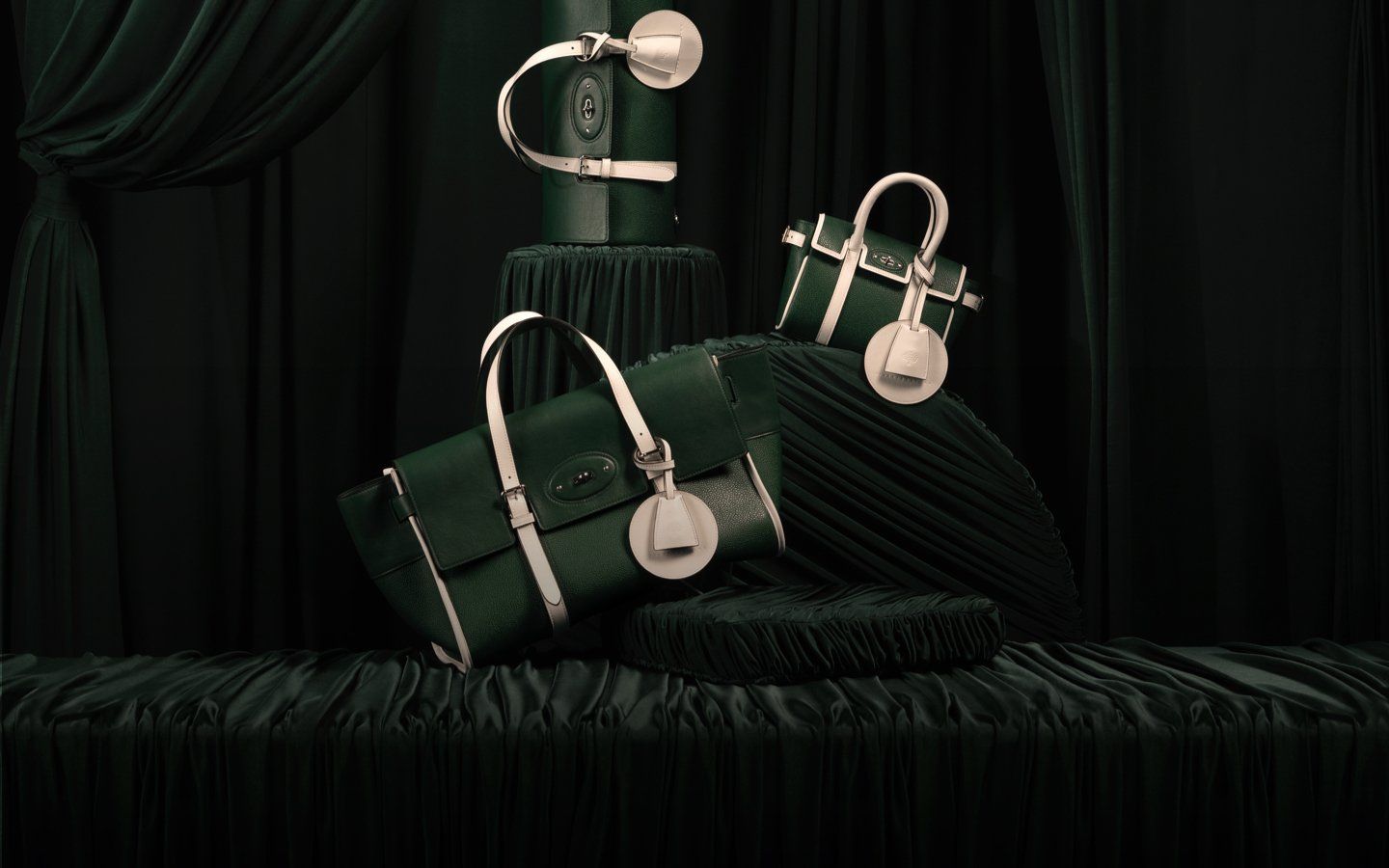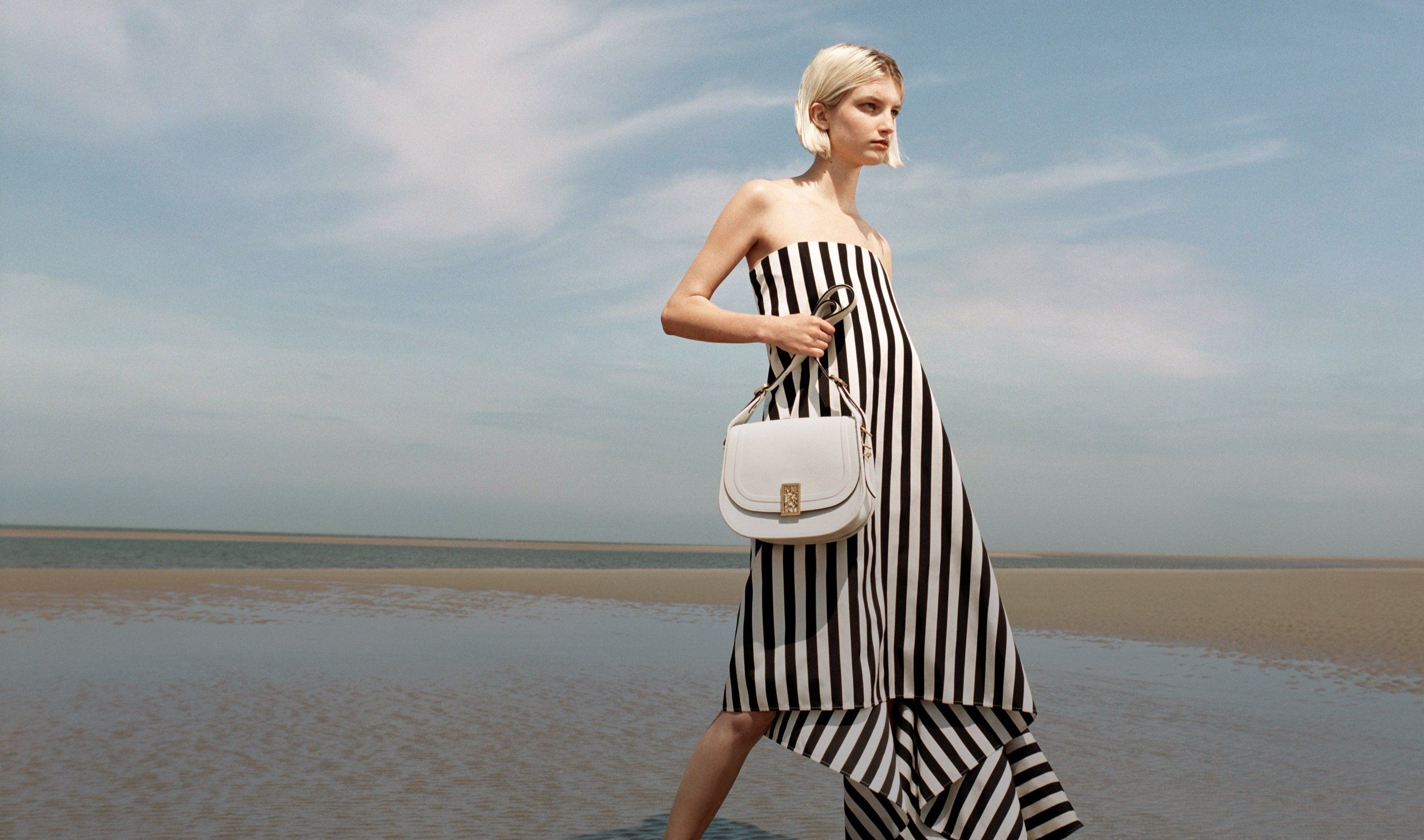In Conversation with Richard Malone
As the Mulberry x Richard Malone collaboration is unveiled, the designer joins writer Laura Antonia Jordan to discuss shared values, sustainability and how function and fashion work in harmony.
Richard Malone is shaking up the fashion industry from the inside. For the Wexford-born designer, sustainable and ethical fashion isn’t a passing trend, it is – and has always been – the heartbeat of what he does since graduating from Central St. Martins in 2014. Fearlessly committed to making the industry a more responsible force, he is refreshingly transparent and fearlessly uncompromising about everything from using deadstock fabric to working with mills that have regenerative practices in place and paying craftspeople fairly. For him, it’s not an option – it’s the only way to do things.
Yet for Richard design doesn’t take a backseat to the processes behind them; for him, there’s no point making clothes that people don’t really want to wear. Known for blurring the lines between art and fashion, Richard has grown an impressive made-to-order business with his sculptural, deconstructed and directional pieces. In 2017 he was part of the Museum of Modern Art New York’s Is Fashion Modern? exhibition; in 2020 he won the International Woolmark Prize.
Now he has joined forces with Mulberry for a limited-edition collaboration in which he melds Mulberry’s heritage with his own bold design language. The collection will be unveiled as part of the Richard Malone runway show at the Victoria and Albert Museum during London Fashion Week this September.
Laura Antonia Jordan: Why did you want to collaborate with Mulberry?
Richard Malone: A lot of brands approach us to do collaborations and we say ‘no’ because there aren’t guidelines in place around sustainability or ethics. This was the first time I didn’t have to ask a brand to show me their sustainability credentials, they were there in a manifesto, so it was easy. It’s not about money for me, I don’t come from money so that’s not how I value work. The luxury for me is what I get to make. Collaborations have to involve learning or experimenting.
LAJ: For anyone not familiar with you work, how would you describe your aesthetic?
RM: Starting out it wasn’t that intentional. I think my background was quite unusual for someone that was in fashion at the time, certainly at St. Martins. I used to work on building sites a lot with my dad and that became part of the conversation because all of the clothes in that environment were about function. For me the brand – I wouldn’t actually call it a ‘brand’, it’s just my stuff – is more about making a space for experimentation. I think people have come to expect that from the shows, to see something a bit different and deconstructed but also hyperfinished and hypersculptural.
LAJ: There’s actually a real synergy between what you and Mulberry do, even though it might not look like it at first glance.
RM: The functions and intentions are the same but the output can be very different. It’s almost like testing these very new ways of doing things, that are actually based on very old ways of doing things.
LAJ: Like the scotchgrain material in the collection. I was gobsmacked when I found out it’s not actually leather.
RM: I went into this really liking the scotchgrain because of the nostalgia. It’s made from bio-synthetic materials, excess waste from the cereal industry which I thought was quite amazing. I just love that something beautiful and desirable can be made from waste.
LAJ: You also share an appreciation for the human touch and a respect for the people who actually make the designs.
RM: I think it’s something that’s really overlooked. A lot of people are so detached from the people who actually make things that it seems like an abstract idea. A huge part of sustainability is localisation and protecting jobs. Where I’m from in Ireland, the linen, wool and metalworking industries have all vanished in my lifetime and that happens very, very quickly. Sustainability conversations often come from the top down, people lecturing about how to shop or behave and usually craftspeople aren’t part of the conversation, whereas at Mulberry I think they’re really inherent to the conversation.
LAJ: I always think there’s a real democracy and generosity to your designs. You really want them to be used and worn.
RM: There’s no point making anything if it isn’t desirable or going to live a life with someone. It’s nice to see Mulberry bags being passed down, almost vanishing into your life. They don’t have a monogram and I think that’s a test of good design. It’s interesting to see something become a huge brand without having that logo or word everywhere.
LAJ: They let you loose in the archives didn’t they?
RM: They did! I have a scotchgrain bag I found in the charity shop and that was my initial research because I like the functionality of it. I looked at old bags from the late ’80s, early ’90s and they became the starting point. We didn’t rely on mobile phones and laptops so bags were more unusual in different shapes; that became a kicking off point.
LAJ: You were granted access to reimagine one of Mulberry’s most loved, most iconic designs: the Bayswater. Can you tell me a bit about how you reinterpreted it and what it means to you?
RM: It means function to me, I see those kind of totes as bags for life. For me it was about looking at all the details that were on the inside of it, making a big open tote that you can put laptops and stuff in. Keeping the postman’s lock but updating it, covering it in leather.
LAJ: Part of the updating means reimagining them in these quite poppy colours and graphic shapes.
RM: Green and white are colours I love, and the electric blue has been part of my collections for ages. My bedroom is that colour! And I really like this kind of orangey red, I just think it’s quite childlike and naïve but also feels reactive and intuitive and that’s what I was going for. It wasn’t about overthinking it or conceptualising it.
LAJ: The collaborative spirit also translates into the campaign. Can you tell me about that?
RM: A lot of the time with fashion brands there’s quite forceful casting, that’s not real community. I just messaged people who are very involved with the brand. For me, this moment to actually look at the people behind it represents it in a very true way.
LAJ: And you’ll be unveiling the collection at the V&A which seems really fitting.
RM: It really makes sense. The V&A is a treasure trove of everything, there’s space for everything to live. There’s a real focus on different types of craft and I think it’s quite egalitarian in that way, which I hope is really a part of my work as well. It’s exciting to show the collection alongside things that are really embedded in the British consciousness, much like Mulberry is. And my family will love it!
LAJ: Are you excited about seeing them out in the wild?
RM: I am, I think it will be really fun.
LAJ: And finally, do you have a favourite?
RM: Yeah, the blue Triangle Bayswater. Because it’s so chic, and I’m not very chic, so I think it’s quite aspirational for me!

